Pleistocene woodland bison
471471
Pleistocene woodland bison (†Bison schoetensacki (Freudenberg, 1910)
Order: Artiodactyla
Family: Bovidae
Dimensions: length - 3 m, height - 1,7 - 2 m, weight - 800 -1000 kg
Temporal range: During the Pleistocene epoch (western Europe - southern Siberia)
Bison schoetensacki, known as the Pleistocene woodland bison or the Pleistocene wood bison, is an extinct species of bison that lived until Middle or Upper Pleistocene among western Europe to southern Siberia.
Due to the lack of genome data, B. schoetensacki's position within the bison clade was uncertain until recently. Along with Steppe bison (B. priscus), this species was once considered as the direct ancestor of the extant European bison (B. bonasus).
Also, fossil ranges of B. schoetensacki and B. priscus overlap such as at Chatillon-Saint-Jean, Mosbach, and Mauer. Additionally, all of B. bonasus, American bisons (B. bison), and B. priscus are noted with sexual dimorphism. Therefore B. schoetensacki was also hypothesized as the female of B. priscus.
A new analysis published in 2017, however, indicates that B. schoetensacki was indeed a sister species to European bison and a potential ancestor. Also, the lineage of steppe bison to be the direct ancestor of European bison was rejected.
B. schoetensacki was generally similar to extant European bison in shape.
In comparison to B. priscus, B. schoetensacki was, either smaller or similar in size but with slenderer leg bones and metapodials, and had shorter and differently shaped horns.
Numbers of fossils have been obtained among Czech, French, Germany, Greece, and Italy while remains of European bisons are absent from Italian and Iberian Peninsulas.
Mass excavations from the paleolithic site, dating back to around 700,000 years ago, in Isernia in Italy indicate B. schoetensacki was the most heavily targeted animal by human hunters. Pleistocene woodland bison and steppe bison seemingly shared some of habitats.
Despite the common name, B. schoetensacki was probably not a mix-feeder compared to extant wood bison. Instead, dental mesowear of the species shows similar pattern to that of extant European bison, a grazer, indicating that B. schoetensacki preferred more open habitats than dense forest.
Credit line (the author of the article) - Mr. Yasutaka Imai
Payment
You may use multiple payment methods to buy image such as credit cards, PayPal and bank transfer.
Pleistocene woodland bison (†Bison schoetensacki (Freudenberg, 1910)
Order: Artiodactyla
Family: Bovidae
Dimensions: length - 3 m, height - 1,7 - 2 m, weight - 800 -1000 kg
Temporal range: During the Pleistocene epoch (western Europe - southern Siberia)
Bison schoetensacki, known as the Pleistocene woodland bison or the Pleistocene wood bison, is an extinct species of bison that lived until Middle or Upper Pleistocene among western Europe to southern Siberia.
Due to the lack of genome data, B. schoetensacki's position within the bison clade was uncertain until recently. Along with Steppe bison (B. priscus), this species was once considered as the direct ancestor of the extant European bison (B. bonasus).
Also, fossil ranges of B. schoetensacki and B. priscus overlap such as at Chatillon-Saint-Jean, Mosbach, and Mauer. Additionally, all of B. bonasus, American bisons (B. bison), and B. priscus are noted with sexual dimorphism. Therefore B. schoetensacki was also hypothesized as the female of B. priscus.
A new analysis published in 2017, however, indicates that B. schoetensacki was indeed a sister species to European bison and a potential ancestor. Also, the lineage of steppe bison to be the direct ancestor of European bison was rejected.
B. schoetensacki was generally similar to extant European bison in shape.
In comparison to B. priscus, B. schoetensacki was, either smaller or similar in size but with slenderer leg bones and metapodials, and had shorter and differently shaped horns.
Numbers of fossils have been obtained among Czech, French, Germany, Greece, and Italy while remains of European bisons are absent from Italian and Iberian Peninsulas.
Mass excavations from the paleolithic site, dating back to around 700,000 years ago, in Isernia in Italy indicate B. schoetensacki was the most heavily targeted animal by human hunters. Pleistocene woodland bison and steppe bison seemingly shared some of habitats.
Despite the common name, B. schoetensacki was probably not a mix-feeder compared to extant wood bison. Instead, dental mesowear of the species shows similar pattern to that of extant European bison, a grazer, indicating that B. schoetensacki preferred more open habitats than dense forest.
Credit line (the author of the article) - Mr. Yasutaka Imai

-797x638.jpg)
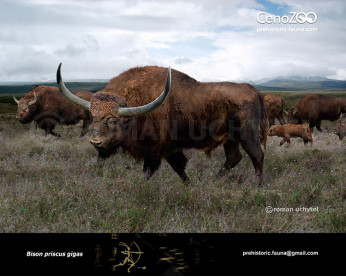
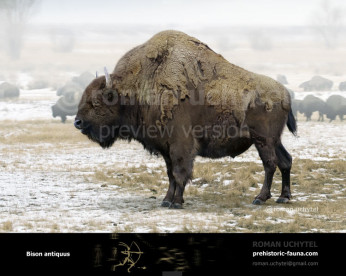
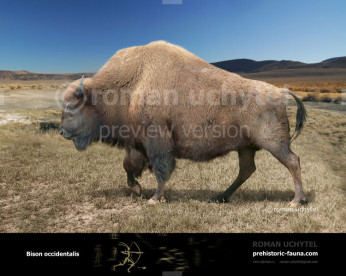
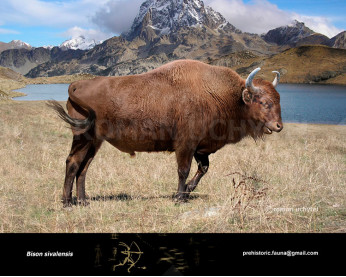
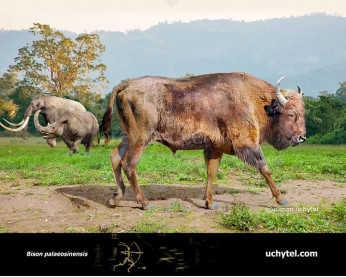
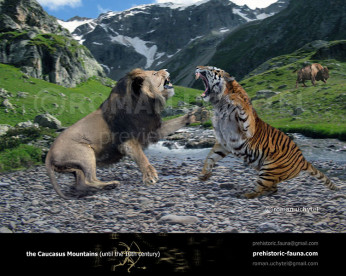
-georgicus-346x277.jpg)